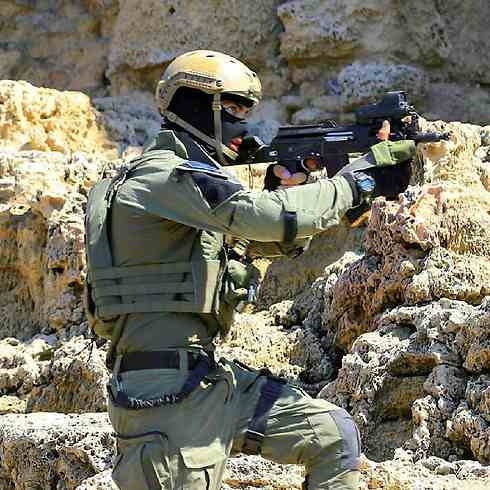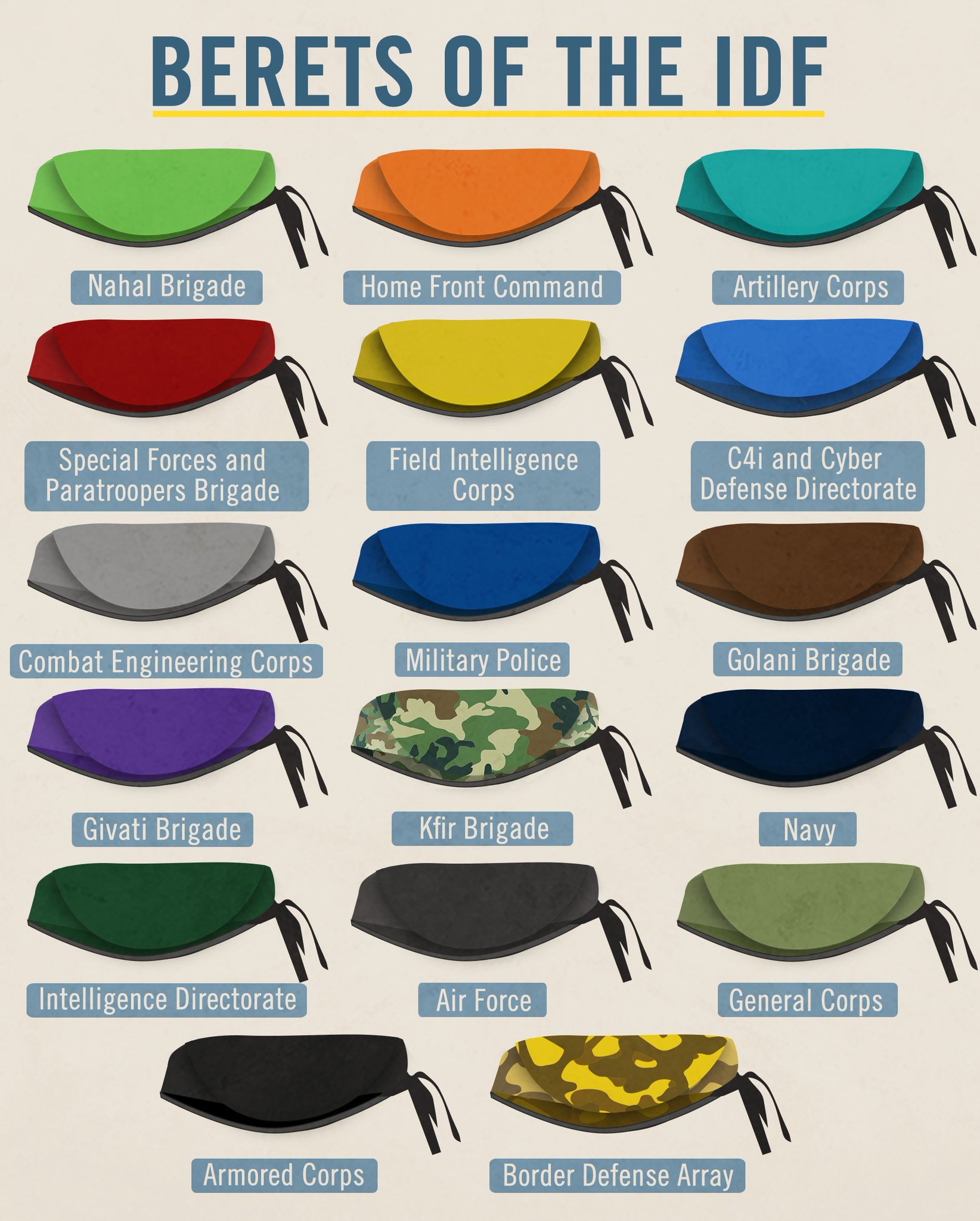Estás usando un navegador obsoleto. No se pueden mostrar estos u otros sitios web correctamente.
Se debe actualizar o usar un navegador alternativo.
Se debe actualizar o usar un navegador alternativo.
Israel fotos militares
- Tema iniciado Leutnant
- Fecha de inicio
Eduardo Moretti
Colaborador
Fusil Gilboa
A esta chica me parece que ya le he visto en alguna fotografía anterior. Difícil olvidarla...
Siempre la vas a ver aqui amigoA esta chica me parece que ya le he visto en alguna fotografía anterior. Difícil olvidarla...

Última edición:
¿dónde lleva los cargadores?
Te juro que vale la pena estimado @TORDO79 jajajajajaMe dan miedo....muuuucho miedo. Abrazo!!!
Hola:
Mister L,seria interesante que pusieras a que unidades pertenecen(si se puede)



Mister L,seria interesante que pusieras a que unidades pertenecen(si se puede)



las IDF se retiran del Sinaí 1976
Operación Litani
El 11 de marzo de 1978, 11 terroristas tomaron un autobús que viajaba por la carretera de la costa para sabotear el proceso de paz con Egipto. Treinta y cinco personas murieron y docenas resultaron heridas. En respuesta, el gobierno decidió emprender acciones militares integrales contra las organizaciones terroristas en el sur del Líbano.
En la noche del 14 al 15 de marzo, las Fuerzas de Defensa de Israel llevaron a cabo el mayor ataque hasta la fecha en Líbano, y después de la medianoche, la IAF bombardeó aldeas que servían como bases de salida para los terroristas.
Al mismo tiempo, comenzó una incursión combinada de infantería, armadura, artillería y fuerzas navales. las FDI atacaron cuatro sectores principales a lo largo de la frontera con el Líbano, con el fin de crear una continuidad territorial entre los tres enclaves cristianos en el sur de Líbano y crear una red de seguridad, en colaboración con las fuerzas cristianas bajo el mando del Mayor Haddad. Dado que la mayor parte de la acción fue contra bases terroristas al sur del río Litani, no entró soldados de Tiro, que sirvieron como base los líderes terroristas que se abstengan de la lucha contra el GLA, que puede causar un gran número de víctimas.
La mayoría de los terroristas huyeron al norte en las primeras horas de la operación. Las FDI hizo su camino hasta el río Litani, como la forma de grandes daños a las aldeas y los terroristas. El intercambio de fuego mató a 300 terroristas.
En respuesta a los terroristas de ataque bombardearon la población en el norte y dos residentes del kibutz Manara mataron. Continuación de la operación, las FDI continuó dependiendo pueblos libaneses y hacerse cargo de Áreas adicionales Las fuerzas blindadas y de infantería capturaron la ciudad de Bint-
A diferencia del pasado, la IAF no está obligada a tratar con otros aviones de la fuerza aérea. El fuego antiaéreo tampoco fue tan fuerte como el fuego antiaéreo durante la Guerra de Yom Kippur.
IAF ayudó a las fuerzas de la armadura y la infantería atacaron emplazamientos de artillería de los terroristas, que se encontraban en los pueblos. La Fuerza Aérea también golpeó los almacenes de munición y cuatro puertos y bases navales. En general atacado 16 pueblos, algunos de ellos aviones de transporte más de una vez. Durante la operación fueron , aviones ligeros y de reconocimiento en helicóptero misiones, transporte, rescatar a los heridos, Manara, el relé y la fotografía.
aeronave durante la operación fueron dañados Skyhawk escuadrilla de "ala volante" y un escuadrón fantasma "caballeros de la cola de color naranja" meñique lingotes. ambos aviones fueron capaces de aterrizar con seguridad en Ramat David. en esta operación participaron Por primera vez, los nuevos F-15 de la IAF
http://www.iaf.co.il/Templates/Flig...8&docType=EVENT
Division 669 works out the fighting in the building
Division 669 is one of the special forces of the Israeli Air Force, established in December 1974. The main task of the unit is the search and rescue of pilots of downed or injured airplanes or helicopters of the Air Force in various conditions, including in the rear of the enemy and at sea. Since the accident rate in the Air Force is very low (an average of 1 accident or a catastrophe per year), and even during the fighting, there have been no serious losses since 1973, the unit is regularly involved in various other search and rescue tasks, whether evacuation of wounded IDF soldiers from areas of combat operations or assistance to civilians, for example tourists trapped in caves, mountain canyons, or construction workers in distress in case of accidents at high-rise construction sites.
official name of the unit is "The Airborne Rescue and Evacuation Division" ("Yechidat Ha-Hiluz ve-ha-Pinui bey-hetes"), although the Air Force website uses a different name: "Combat Division for Rescue and Evacuation by Air" ("Yechidat ha-Hiluz ve-ha-Pinui ha-Kravi bey-hetes "). In addition to evacuation by air, land evacuation techniques using jeeps and other land vehicles are often used, for which 669 interacts with the Transport Division of the IDF (Yechidat Ha-Niud), but they also have their own transport division (Palgat Ha-Niud). For example, ground evacuation was used during the operation "Mighty cliff" in the Gaza Strip in the summer of 2014. The wounded were taken out of the Sector, and already there they were loaded onto helicopters.
According to Wikipedia, the unit consists of departments ("Gaf"): evacuation ("Gaf Hiluz", actually rescue fighters), medical ("Gaf Refua", borprotaci, paramedics and medical orderlies), technical ("Gaf Technical"), search for missing ("Gaf AITAN", ie "Itur Neadarim"), as well as the School of the unit. According to the Air Force website, the division has divisions in its composition (Palga), which is typical for the special units of the IDF, for example, the Training Division (Paladat Hadraha) and the aforementioned Transport Division.
The fighters of the unit are divided into teams ("Tsevet"), each led by an officer. Teams are divided into links ("Julia"). As you can see in one of the photos below, the strength of the team is about 14 people. When flying on a mission on a helicopter, the link involved in the assignment is usually reinforced by the medical staff. In the course of ground operations, the whole team can be involved.
In addition to the usual infantry training, the soldiers 669 undergo medical training, light-water training for rescue at sea, rock climbing training for rescue in the mountains, buildings, wells, etc. It is also studied minno-subversive case and the breaking of doors and grids without the use of explosives.
On 14.01.18 the Air Force website published an article about training 669 in combat operations in construction (LASHAB, "Lohama be-Shetah Banuy") in the training complex of the unit at the Palmachim Air Force Base. Each team of the unit undergoes such training every few months, usually before the operational work ("Taasuka Mivtsait") of this team in one of the districts of Israel.
The exercises include shooting training, rapid crossing of open terrain, advancement in construction, evacuation from the building, evacuation with the help of cables from pits and wells. This time, helicopters are not used, fighters move on land transport. It is noted that the fighting in the building is the most difficult kind of combat, on the other - the most urgent for the IDF in modern conditions.
In general, the unit trains constantly, both at its base and at other facilities. Once a few weeks, concentrated weekly exercises are held. Each teaching is accompanied by a reserve officer, a representative of the unit's Training Division. He monitors the actions of fighters and commanders, writes down notes, and at the end of the exercises presents a detailed report, studied during the "debriefing" to extract conclusions and correct mistakes.
Combatants 669 are regularly on alert for search and rescue operations. If the team to conduct such an operation is given, everything unfolds swiftly. It can be the evacuation of a pilot of an airplane, shot down in the rear of the enemy. A tourist who fell from a cliff. The sailors of the corvette, struck by the enemy RCC. Fighters of one of the units of the ground forces, wounded during the battle and needing evacuation through the air. Fighters 669 never know in advance where they will be sent next time, so you need to be prepared for any scenario in terms of training and equipment.
Disculpen esta en ingles pero si la subo en castellano @fanatikorn la trolea jajajjaja, pero siempre con la buena onda del FANA.
Última edición:
Por ser el fusil que mas golpe aguanta , arena, tierra , agua salada.¿El uso de AK47 en los SOF es por Algun motivo en especial...(o por la region)?
...

Última edición:
Gracias por el desburrePor ser el fusil que mas golpe aguanta , arena, tierra , agua salada.
Si es de ella que la vaya a usar es otro cantar, seguro se siente mas segura asi como muchos israelies .
WOW...interesante el cambio... Eilat 1951-
Eilat 1951-
Eduardo Moretti
Colaborador
 Eilat 1951-
Eilat 1951-
Es impresionante el desarrollo que el Estado de Israel ha logrado conseguir en estas décadas.
Estas dos fotografías son verdaderamente representativas de ello. Pese a las dificultades el permanente progreso no se detiene.
Deben haber gastado millones de litros de pintura.
Hola:IDF@IDFSpokesperson
Berets come in different colors, do you know what they represent?

esto esta muy bien
P.D.:
ahora:nombre,medidas y nº de telf de TODAS las chicas que has puesto hasta ahora
y como será mucho trabajo mas cerveza por favor
Temas similares
- Respuestas
- 2K
- Visitas
- 91K
- Respuestas
- 66
- Visitas
- 3K
- Respuestas
- 257
- Visitas
- 12K













